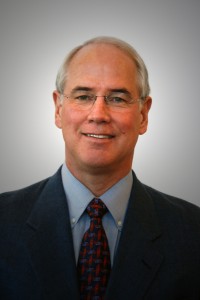We hear about Michigan’s disastrous car industry daily… Let’s not forget, though, that there are other windows on the mishigami, the great lake: phenomenal entrepreneurs determined to transform challenges into opportunities. One of the most prominent is Roger Newton.
From success to back to goal one, i.e. improving the lives of peoples
Born in New Jersey, Roger Newton came to Ann Arbor in 1981 to work as a senior scientist at Parke-Davis, a subsidiary of Warner-Lambert, where he joined the atherosclerosis team and co-discovered, after fifteen years of hard work and struggles, the drug that was to be trademarked as Lipitor, and was approved by the U.S. Food and Drug Administration in December 1996. Before Pfizer merged with Parke-Davis/Warner-Lambert, Roger left the company to start Esperion Therapeutics with Charles Bisgaier, Michael Pape, and Tom Rea in July 1998 to focus on HDL therapy, a company that he sold to Pfizer six years later for a staggering $1.3 billion. However, in January 2007, Pfizer’s restructuring, after the development of the torcetrapib/Lipitor combination was terminated, caused the layoff of 2,100 Pfizer colleagues working in Ann Arbor over several months and eliminated the Esperion side of the business. Roger Newton was also on the list for the guillotine. Was this a problem for him? Looking at things from the outside, you might think that this was actually an opportunity for him to retire, enjoy his money and run his foundation. Well, this is not what happened. Why? The entrepreneurial drive is a complex mix of creative insatiability, good HDL, and the indomitable desire to make the world an always better place. There is certainly also something akin to a righter of wrongs’ fiber in this community-oriented and charismatic man: “When there are so many talented ex-Pfizer people and state of the art facilities around, you can’t throw in the towel: reenlisting for success is the way to go”, he says. Is there a better goal than the one of improving the lives of people, anyway?
“The will to believe” makes things happen over again
After 50 weeks of negotiations, Pfizer divested former Esperion assets and sold them back to Roger including the Esperion name. Four venture capital firms including Alta Partners, Domain Associates, Aisling Capital, and Arboretum Ventures enabled the restart of Esperion Therapeutics, in which Pfizer also retains a financial interest! Simultaneously, and quite extraordinarily, the original Esperion Therapeutics facility in Plymouth, MI, renovated by Pfizer in 2006, is now morphing into a life science business incubator. Yes, you get it right… There has been less than two years between Pfizer’s announcement of the shutdown of its Ann Arbor plant, and the two-pronged biotech rebirth of Ann Arbor.
The second incarnation of Esperion Therapeutics has only eight employees, but has the goal of creating a portfolio of small molecule and biopharmaceutical product candidates which beneficially affect patients with atherosclerosis due to abnormal blood cholesterol levels.
The incubator, called the Michigan Life Science and Innovation Center, is a 60,000 square-foot facility with state of the art offices, vivarium, and laboratories. Although Esperion is currently the only company located there, it is expected over the next few months that an additional eight to ten startups will be become their close neighbors.
For Roger, entrepreneurship is both a lifestyle and a cause to which he was able to rally the local authorities, the Michigan Economic Development Corp., and the Ann Arbor Spark Foundation, a subsidiary of the Ann Arbor’s economic development group, Spark, that will run the incubator. If “it takes a village to raise a child,” it clearly takes a community’s dedication to its own future to bootstrap itself out of a bad situation. This success is “the vision of many people,” Roger says.
 Notice to entrepreneurs and VCs from other parts of the country: Ann Arbor and its surroundings may be an area that you want to discover: a vibrant town, a beautiful landscape, a great university and lot of IQ floating in the air.
Notice to entrepreneurs and VCs from other parts of the country: Ann Arbor and its surroundings may be an area that you want to discover: a vibrant town, a beautiful landscape, a great university and lot of IQ floating in the air.
Was it easy? No. Would Roger do this differently? Probably not.
The Silicon Valley mythology tends to pedestal people who get it all at 35 (without really distinguishing between the real agents of success and the cohort of after-the-fact-heroized guys/gals who were only accessories to that success and just lucky to be there at the right time). Such mythology can be fantastically stimulating, but also terribly inhibiting. If you dream to change the world, you may also want to look at it as a life-long project and realize that the distance between milestones may not always be that of a young goat’s leap. As a reminder, here are some markers you may want to reflect upon:
Official public validation of Roger’s endeavors: in 1996 at the age of 46. For a scientist, this is success by itself, but at the same time, Roger’s professional career was not in great shape. At Parke-Davis, he had ended up being marginalized; his research team had been disbanded and he had lost most of his influence. He could have indulged in self-pity. Instead, he created his first startup, the first version of Esperion. He was 48.
Huge financial success: in 2004 at the age of 54. For most people, this is it. For real entrepreneurs, personal wealth is not the point. Therefore when Pfizer shut down Esperion, Roger felt as naked and dispossessed as everybody else, and his entrepreneurial drive was rekindled. He could have decided to bask in the honor system that rewards successful people; yet, aged 58, he is ready to play again.
As all great leaders, Roger takes the blame onto himself when things go wrong, but shares the credit with others for positive outcomes, his wife, his children, his friends, and his colleagues and partners.
One of his favorite books? A book that recounts how bettering one’s life is to continuously move oneself out of one’s comfort zone and be able “to walk naked into the land of uncertainty,” Deep Change: Discovering the Leader Within (Jossey-Bass Business & Management Series), by University of Michigan business professor Robert Quinn. It is obvious that Roger has taken Professor Quinn’s words to heart!
Marylene Delbourg-Delphis
Additional reading:
 Deep Change: Discovering the Leader Within (Jossey-Bass Business & Management Series)
Deep Change: Discovering the Leader Within (Jossey-Bass Business & Management Series)
The Medicine Man, by Candace Stuart: http://www.dbusiness.com/DBusiness/November-2008/The-Medicine-Man/
Various articles: http://www.mlive.com/mbusinessreview/stories/index.ssf?/mbusinessreview/se/stories/20050106_executive.html



3 responses so far ↓
1 ann // Dec 18, 2008 at 8:47 pm
Great! article Marylene. Very inspiring. -Ann
2 Posts about Investors in Startups as of December 19, 2008 | The Lessnau Lounge // Dec 19, 2008 at 5:22 pm
[…] […]
3 sina // Dec 24, 2008 at 8:11 am
absolutely inspiring. i feel that i’ve been fooled into believing that i’m a failure for not having achieved “success” by 30. especially for those of us who were raised in the valley surrounded by the uber-successful, stories like roger’s offer us a dose of realism that is nothing short of a breath of fresh air. merci marylene.
Leave a Comment